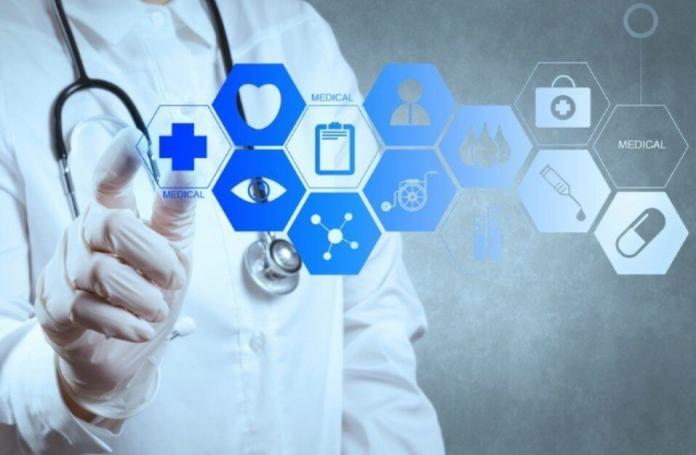The healthcare sector is thriving by making health services and medical system more efficient for patients. The integration of technological advancements and the convergence of emerging technologies have expanded the reach of proactive and preventive care worldwide. Still, there is a lot of room left for improving healthcare facilities and enhancing the sharing of the patient’s health information between clinicians and healthcare facilities.
Every year, more than 50% of deaths occur due to chronic and fatal diseases like cancer, stroke, and heart disease. These diseases have affected the quality of life and health of many people globally. Now, technology can lend a helping hand in increasing the effectiveness of preventive and therapeutic care for such diseases. Be it diagnosis or treatment, technology is capable of providing a personalized experience to patients.
These days, we witness a paradigm shift in both medical device manufacturing and healthcare app development industries in favor of the end-users or patients. Internet of Things-enabled medical technology is responsible for this reactive care paradigm in the healthcare sector. As forecasted by BI intelligence, the number of healthcare IoT devices will grow from 95 million in the year 2015 to 646 million in the year 2020.
It is an unchallenged fact that the medical community can deliver high-quality healthcare services if individuals care for their health and preventive pre-diagnoses care. The convergence of IoT and healthcare technology makes this possible by revolutionizing reactive and proactive healthcare services. IoT-powered healthcare services can enhance data collection and analysis, increase patient usability of services, and empower service providers and patients alike.
From predicting to the prevention of the onset of diseases and respond to other health-related complications, the IoT technology can assist clinicians and the healthcare executives to act more rapidly. For example, the patient’s data regarding lab tests, history, and other clinicians’ therapeutic options can help healthcare service providers improve their responses during any emergency situation.
Role of IoT in Medical Services
Physicians have to spend a lot of time in collecting and analyzing the patient’s data. As the number of patients keeps on increasing, it is difficult for them to analyze all aspects of every patient’s health condition along with analyzing health data. There, IoT-enabled technologies come into the picture. These technologies alleviate these difficulties by providing specific information to physicians that can help them make informed decisions in real-time.
What’s more, physicians can also spend more time on sensitive issues of the patient’s health and focus on major aspects. Here are the top three healthcare domains on which IoT can have a major impact.
- Clinicians can get a concise and holistic data of Patient’s condition with other physicians’ reviews
- Healthcare professionals can get a better insight into patient rehabilitation through data
- Easy and effective transfer of data between healthcare providers
Simply put, IoT has started providing many benefits to the healthcare sector and facilitate healthcare service providers to transform the traditional procedures into patient-centric procedures. For example, IBM Watson has developed Knowledge Integration Toolkit (KnIT) for discovery. It consists of a three-phase process of exploration, analysis, and interpretation of the healthcare procedures. KnIT uses Watson’s AI platform to read and analyze scientific papers.
Here, Watson enables clinicians and healthcare service providers to get rid of data analysis while allowing them to spend time on improving the patient’s conditions and vitals. Companies like Biotricity are pioneers in developing remote patient monitoring technology. These companies build medical devices that fetch the real-time patient data and transmit the same for analysis within the cloud securely.
This IoT-powered technology can facilitate communication across various devices and the system. It is designed to communicate data over a secure network and facilitate better data analysis for healthcare providers. As a result, the healthcare company can serve patients in a better way. Physicians can get real-time actionable data with feedback.
Taking the example of Biotricity, the company has a remote patient monitoring technology known as Bioflux. This technology can improve patient care and reduce inefficiency. Ultimately, it assists doctors to save lives. Let’s go through the key benefits of IoT-powered healthcare technology and its importance in the modern healthcare industry.
Key Benefits of IoT-based Medical Technology in Healthcare Sector
Here we mention five major benefits of IoT-enabled medical technology.
- Get and share alerts real-time- Many IoT devices work on a 24/7 basis, and therefore, they can play a significant role in the health industry. If any unusual findings or data are detected, these devices immediately alert the user. In a way, such devices can help patients to get emergency treatment and prevent the condition to get worsened.
- More engagement- Just like customer engagement, patient engagement has also become a buzzword in the modern healthcare system. IoT-based medical technology enables the patients to get more control over their health journey and encourages them to participate in the healthcare program with more confidence.
- Cost reduction- The greatest advantage of IoT devices is they can reduce operational inefficiencies that cost a lot to the company. Official research has predicted that IoT will continue to reduce these costs by 25% or $100 billion every year. IoT-based healthcare technology can help patients to prevent any emergency situation or making the condition worse thereby saving a lot of money.
- Telehealth promotion- The telehealth approach can be implemented in the best possible manner with the help of IoT technology. It facilitates the patient to receive healthcare services without physically going to the physician’s clinic. The telehealth concept is a technological boon for people who live in remote or rural areas.
More effective and relevant data- IoT devices can collect useful and relevant data across different industry sectors. In the healthcare sector, such devices monitor the patient’s conditions round-the-clock and fetch better-quality data for the specialist’s reference. Also, IoT-enabled medical devices are programmed to analyze, interpret, and report the data instantly.
Do you want to know the future of IoT-enabled medical technology? Read on to know the scope of IoT in the healthcare sector.
Future of IoT-enabled Medical Technology
The thriving healthcare sector will rely more on healthcare app development services in the future. Customized healthcare apps will fetch real-time data and help clinicians predict and control any possible disease outbreaks. IoT wearables can be connected with healthcare apps to change the face of healthcare services globally. Ingestible sensors, smart glasses, hearables or hearing-based wearables, and ‘moodables’ or devices that are used to relax patients with stress disorders, depression, and ADD.
As a result, there is a significant decrease in suffering or pain and cost. Let’s take an example of a stroke algorithm. It is based on the severity of stroke during EMS (Emergency Medical Service). Thanks to this algorithm, the ambulance staff can get real-time information and use advanced tools to identify the type of stroke and assess the patient’s condition. Based on this, the ambulance can take the patient to the most suitable hospital for specific treatment.
Traditionally, healthcare services remain inadequate to provide personalized experienced to patients especially when the number of patients keeps on increasing worldwide. In other words, patient engagement is reducing day-by-day and the incidents of nonadherence are increased. Clinicians and healthcare staff find it difficult to cope with the growing number of patients and manage every process smoothly.
There, IoT-enabled medical technology can transform the processes into more result-oriented and patient-focused procedures. It provides real-time, relevant, and medical-grade information of every patient to healthcare professionals. What’s more, it facilitates patients and physicians to record, share, and reinforce critical data on a 24/7 basis. In a nutshell, the future of healthcare services is an IoT-enabled medical technology and we will witness its exponential growth in the coming years.
However, one should not utilize IoT without taking protective measures in healthcare services. It is fair to mention that clinicians or specialists should remain vigilant for protecting the patient’s confidential data. The patient-related data is usually stored in the cloud, but there is always a risk of a data breach. Therefore, while making the most of the IoT technology, the effective plan for protecting the patient’s data should be in place.








